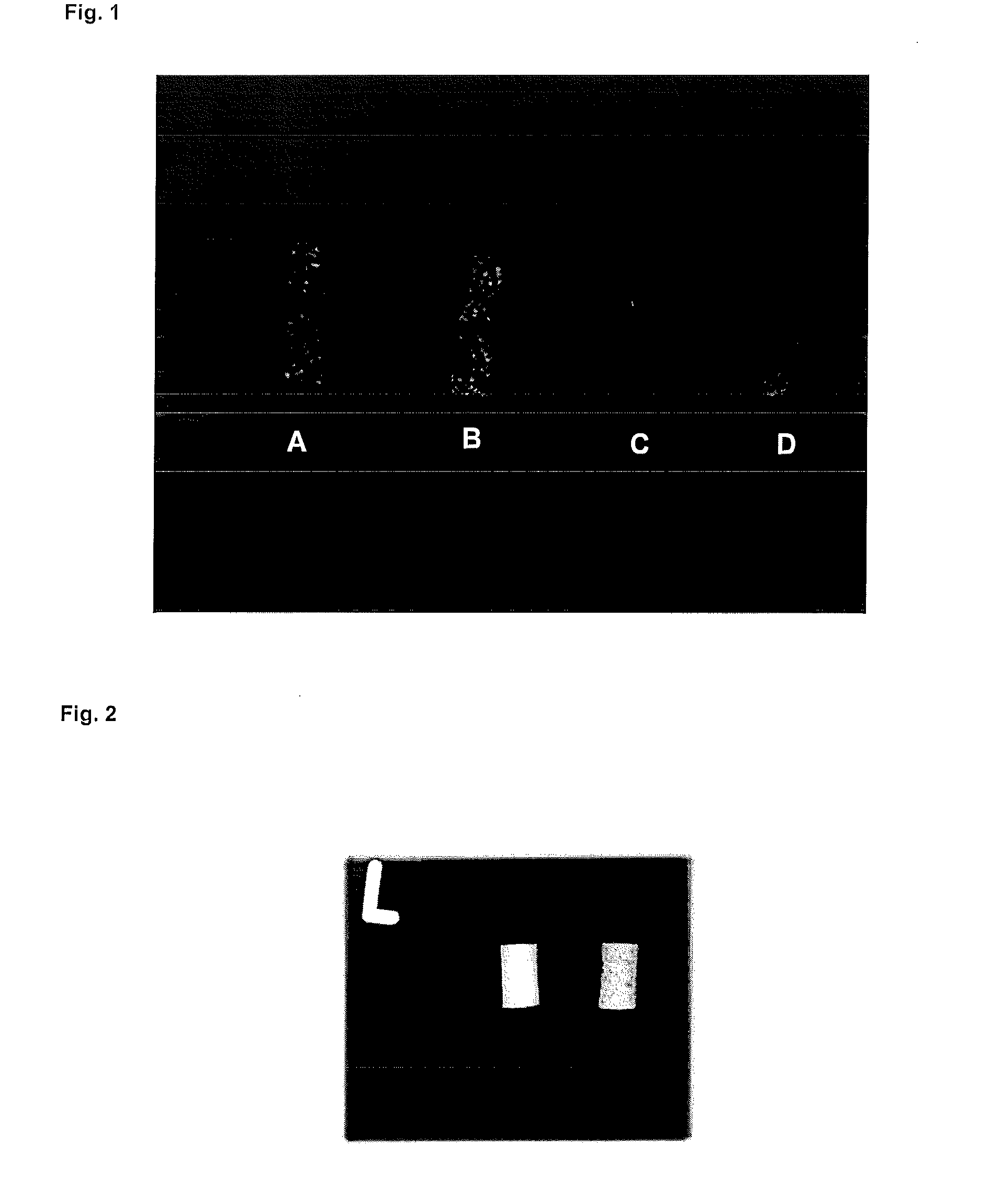Biodegradable composite material
a biodegradable, composite material technology, applied in the field of biodegradable composite materials, can solve the problems of high patient risk, limited endogenous (autogenous) bone suitable for transplantation, and bone defects that can arise,
- Summary
- Abstract
- Description
- Claims
- Application Information
AI Technical Summary
Benefits of technology
Problems solved by technology
Method used
Image
Examples
example 1
[0108]The particle fraction 1000-2000 μm of constituent I is separated out by sieving and 5.6 g portions thereof were each suspended in 20 ml of constituent D, and 74 μl of constituent P are added thereto. After 0, 1, 3, 6 and 23 hours, the material was filtered, washed and dried. The particles were then washed, filtered off and dried and tested for particle size using a laser scattering apparatus (Fritsch Analysette), tested for the integrity of the surface by means of scanning electron microscopy and tested for phase purity by means of X-ray powder diffractometry. Table 1 shows d10, d50 and d90 values of tricalcium phosphate powder after different periods under the action of acetic acid.
TABLE 1Hours in acetic acidd10d50d90012.630.0951.74111.7630.6550.05310.5225.1643.3868.7424.0642.31239.7921.9837.27
[0109]As can be seen from Table 1, only after 6 hours is there any appreciable reduction in particle sizes, the fines fraction, which is represented by the d10 value, being subject to g...
example 2
[0111]16.5 g of constituent O are added to 3.5 ml of constituent D and suspended by means of a colloid mill. The particle fraction 1000-2000 μm of constituent I is separated out by sieving and 5.6 g were added to the suspension. After addition of 74 μl of constituent P, the material is stirred at room temperature. After 0, 30, 120 and 165 minutes, the acid is neutralised and the mixture is poured into a mould and freeze-dried. X-ray powder diffractometry is used to test whether the action time of the acid has affected the phase stability of the calcium phosphate. The results show that the action of the acid has had no effect on the phase stability of the material.
example 3
[0112]The granular fraction 150-500 μm is separated out from constituent H by sieving. The fractions 150-500 μm and 1000-2000 μm are separated out from constituent I by sieving. These components are mixed together in various ratios in accordance with Table 2.190 g of constituent O are suspended in 1000 ml of constituent D and ground by means of a colloid mill. 760 g of the granular mixture are added and the mixture is intimately mixed. After addition of 10 ml of constituent B, the mixture is neutralised, poured into a square high-grade steel mould and lyophilised. Depending upon the lyophilisation procedure (slow or fast) it is possible to obtain composite materials having densities of 0.2 or 0.4 g / ml. Table 2 provides information about the different mixtures and the densities and specific surface areas measured.
TABLE 2Measurement results of various collagen / ceramics composites in comparisonwith collagenSpecificConstituent HConstituent IConstituent ICollagensurfaceRatio of150-500 μm...
PUM
| Property | Measurement | Unit |
|---|---|---|
| Temperature | aaaaa | aaaaa |
| Length | aaaaa | aaaaa |
| Length | aaaaa | aaaaa |
Abstract
Description
Claims
Application Information
 Login to View More
Login to View More - R&D
- Intellectual Property
- Life Sciences
- Materials
- Tech Scout
- Unparalleled Data Quality
- Higher Quality Content
- 60% Fewer Hallucinations
Browse by: Latest US Patents, China's latest patents, Technical Efficacy Thesaurus, Application Domain, Technology Topic, Popular Technical Reports.
© 2025 PatSnap. All rights reserved.Legal|Privacy policy|Modern Slavery Act Transparency Statement|Sitemap|About US| Contact US: help@patsnap.com



